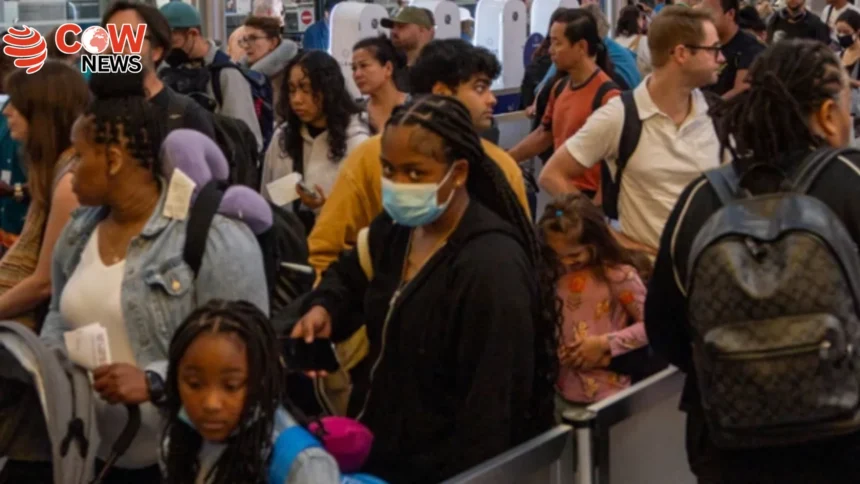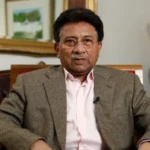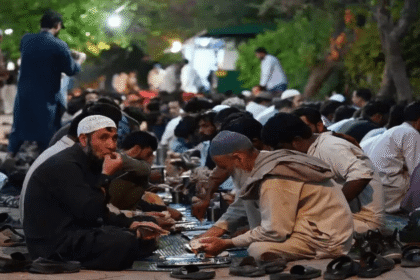U.S. President Donald Trump has signed a sweeping new executive order imposing full travel bans on citizens of 12 countries, while placing partial restrictions on six others, in what the White House describes as a decisive move to protect national security and ensure “America’s sovereign right to secure its borders.”
According to the presidential order released on Wednesday, the new travel restrictions will go into effect from Monday, June 9, 2025. The order bars nationals from the 12 designated countries from entering the United States under any visa category, including immigrant and non-immigrant visas, refugee admissions, and asylum claims, unless they meet rare national interest or humanitarian exemptions.
The 12 countries subjected to the complete travel ban are Afghanistan, Iran, Yemen, Libya, Somalia, Sudan, the Democratic Republic of the Congo, Myanmar (Burma), Chad, Eritrea, Equatorial Guinea, and Haiti. The administration cited ongoing security threats, unstable governments, lack of proper identity management systems, and intelligence cooperation failures as the key reasons behind the decision.
“These nations have either failed to meet our baseline security requirements or pose an elevated risk to the homeland due to terrorism, civil instability, or hostile activity against U.S. interests,” the executive order states.
Additionally, the U.S. has introduced partial travel restrictions on six countries: Burundi, Cuba, Laos, Sierra Leone, Turkmenistan, and Venezuela. Citizens from these nations will now face enhanced vetting procedures, limited visa categories, additional documentation requirements, and reduced visa validity periods. Some categories, such as student or tourist visas, may remain available but subject to stricter scrutiny.
Interestingly, Pakistan was not included in either the full or partial restriction lists. Senior U.S. officials confirmed that Islamabad has, for now, avoided inclusion in the ban due to recent diplomatic engagements and security cooperation initiatives with Washington.
“The fact that Pakistan is not currently on the list reflects the positive trajectory of recent bilateral discussions,” said a U.S. State Department source speaking on background. “However, this does not mean future reassessments are off the table.”
The order explicitly instructs the Department of Homeland Security (DHS) and State Department to continue monitoring and updating lists of nations deemed hostile to U.S. security interests, leaving the door open for future amendments.
This latest move marks a return to Trump’s earlier policies during his first term (2017–2021), when he issued a controversial travel ban targeting several Muslim-majority countries. While that executive order faced legal and political backlash, it was eventually upheld by the U.S. Supreme Court in 2018.
In this iteration, the list has expanded significantly and includes countries beyond the Middle East and Africa, broadening its geopolitical and racial scope. Human rights advocates and immigration experts were quick to criticize the decision, calling it discriminatory and politically motivated.
“This is another chapter in a long-standing effort to demonize migrants and isolate communities,” said Linda Chavez, director of the Center for Human Rights and Immigration Policy. “These policies do not make America safer—they erode our values and damage international relations.”
President Trump, however, defended the move, framing it as a necessary step in a volatile global landscape. Speaking at a press conference at the White House, he said:
“These are tough times and America needs to take tough decisions. We are not going to allow individuals from nations with poor security records to threaten the safety and prosperity of our people. We welcome immigrants—but only those who respect our laws and contribute to our country.”
He further added that the Department of Homeland Security had carried out an extensive assessment of more than 200 countries based on passport integrity, identity management, criminal data sharing, counter-terrorism cooperation, and visa overstay risks.
Reactions from the affected countries began to surface on Thursday. Iran, one of the countries facing a total ban, issued a strong condemnation, calling the decision “an act of collective punishment that violates international norms.” The governments of Somalia and Sudan also demanded immediate clarification from Washington, while Haiti’s Ministry of Foreign Affairs said it was “disappointed and blindsided” by the sudden announcement.
In contrast, U.S. allies in the Middle East and South Asia have reacted cautiously. Pakistani officials privately expressed relief at being spared, although concerns linger over future evaluations. “It’s a temporary diplomatic victory, but we know this administration’s positions can change rapidly,” a Pakistani diplomat based in D.C. said on condition of anonymity.
The executive order will have immediate consequences for thousands of visa applicants. All consular processing in the banned countries will be suspended by June 9, and travelers already issued visas may face secondary screening or revocation under existing national security protocols.
The DHS has also instructed airlines and border agents to update their internal databases and no-fly lists to reflect the new restrictions. Legal challenges are expected in several federal courts, as immigration advocacy groups prepare to contest the bans, alleging violations of constitutional rights and international human rights commitments.
With the 2026 presidential campaign gaining momentum, President Trump’s latest immigration maneuver is widely seen as an appeal to his conservative base. It underscores his administration’s hardline stance on border control and immigration—a central theme of both his past and current tenures.
As U.S. agencies implement the new directives, international observers, legal analysts, and affected communities will be closely monitoring the fallout of yet another chapter in America’s evolving immigration story. Whether this action withstands legal scrutiny and diplomatic pushback remains to be seen, but for now, the message from the Trump White House is unmistakably clear: security above all else.







